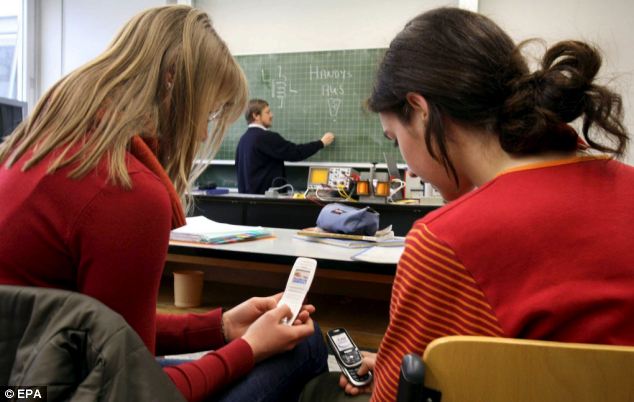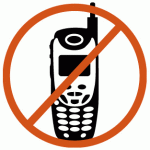The Trials and Tribulations of Technology
 There are certain topics that seem to cause hot debate among teachers – some standing to the far right of the issue and some to the far left, with very few taking a middle stance. These issues can be fairly simple ones, like whether we should allow kids to eat in the classroom, wear certain clothing, or chew gum. Staff meetings can become quite heated around these questions – but nothing seems to get people more worked up than the issue of technology in the classroom. And admittedly, it’s a very difficult issue. We face all kinds of technology related problems in school:
There are certain topics that seem to cause hot debate among teachers – some standing to the far right of the issue and some to the far left, with very few taking a middle stance. These issues can be fairly simple ones, like whether we should allow kids to eat in the classroom, wear certain clothing, or chew gum. Staff meetings can become quite heated around these questions – but nothing seems to get people more worked up than the issue of technology in the classroom. And admittedly, it’s a very difficult issue. We face all kinds of technology related problems in school:
- Students who phone home claiming to be ‘sick’ can make a parent battle traffic for half an hour, only to discover that their child is trying to avoid a math test. Obviously, the parent is furious (and usually more with the school than the child).
- Kids who take nasty pictures of their peers and bully them through Snapchat, Facebook, Twitter, or the myriad other social media sites out there.
- Friends who are busy chatting (on phones or computers) in class instead of working
- Students who spend work time watching videos, playing games, or browsing through Instagram and Pinterest.
 Years ago, in our school, we prohibited the use of cell phones to avoid some of the chatting, phoning, and bullying issues. But then along came tablets and apps for laptops. Cell phone messages are no longer our major issue – there are any number of ways to chat on tablets and laptops. So how do we stop students from sending messages to their parents and friends during the school day? Taking the phone away certainly doesn’t work. It doesn’t help that, since the advent of smartphones, these devices have become excellent work tools: students use them to take notes and snap pictures of assignments on the board or charts on the wall. They do research in class and, for all intents and purposes, they can come to school with their smart phone and leave their laptop at home.
Years ago, in our school, we prohibited the use of cell phones to avoid some of the chatting, phoning, and bullying issues. But then along came tablets and apps for laptops. Cell phone messages are no longer our major issue – there are any number of ways to chat on tablets and laptops. So how do we stop students from sending messages to their parents and friends during the school day? Taking the phone away certainly doesn’t work. It doesn’t help that, since the advent of smartphones, these devices have become excellent work tools: students use them to take notes and snap pictures of assignments on the board or charts on the wall. They do research in class and, for all intents and purposes, they can come to school with their smart phone and leave their laptop at home.
The lines between phones, tablets and laptops have blurred to the point where they work in much the same way. A phone is easier to carry and almost as efficient as most other devices. So how do we stop the abuse of technology? Do we prohibit students from having laptops, iPads, tablets, Kobos and Kindles, in school? Do we go back to looking up information in encyclopedias and writing everything by hand? Do we throw up our hands and say “Technology is too dangerous! We give up”? Technology has so much to offer, but it means educating teachers, students, and parents so that we minimize the abuse. Punitive measures like “some students abuse it so no one can use it” just don’t seem to be the answer. So, what can we do?
Educate, educate, educate……
- Create clear rules about tech use (for instance, cell phones may be used in class but students who use them to chat with friends or call home lose the privilege for a week) and make sure students and parents are aware of them. Then be consistent in applying them.
- Actively help kids learn to monitor their own use of technology. Once children are in university, professors won’t care if students waste their time in class playing with gadgets, but their grades may be seriously affected. And in the workplace, employees who waste company time with their digital addictions are often fired. Our students need to become responsible for their own actions in order to avoid these pitfalls later on in life.
- Teach parents how to respond when their children call them from school. For example: “If you’re sick, please have the nurse call me so I can pick you up.” or “You’re not supposed to call me from school. Can we talk about this problem when you get home?”
- Teachers need to be vigilant in the classroom. Good teachers move around the classroom as they teach and as students work. It’s hard to see what kids are up to if we’re sitting at our desk doing
 paperwork.
paperwork. - Teachers should also be observant during recess and transition times – this is when most bullying happens (with or without technology) and we need to keep our students safe.
- Adults need to model the proper use of technology. Teachers shouldn’t be texting in the classroom, and parents should put away their smartphones and give their children their full attention when they’re sharing a meal or spending time together.
- In her blog “Learning in Action” Kim Cofino says “students are well prepared to focus on learning during school time, but struggle to manage this challenge at home.” She goes on to say that her school will “continue to work towards helping students (and teachers, and parents!) find balance in their use of screen time.” Most of us struggle with balancing our digital use and living our real lives. Even more reason why we need to actively teach this in school and at home.
Most of the “problems” we’re seeing aren’t new: they existed well before technology did. Before cell phones were invented, kids chatted in class by passing notes, bullying went on, and students wasted time in school by playing tic-tac-toe on their desktops, rock, paper, scissors in the palm of their hand, and if they had a piece of grid paper, they could play a rousing game of war ship. Kids will be kids and technology doesn’t change that. The adults in their lives cannot throw up their hands, placing the blame on technology. Instead, parents and teachers need to consistently help their children navigate this ever-changing world.

Leave a comment